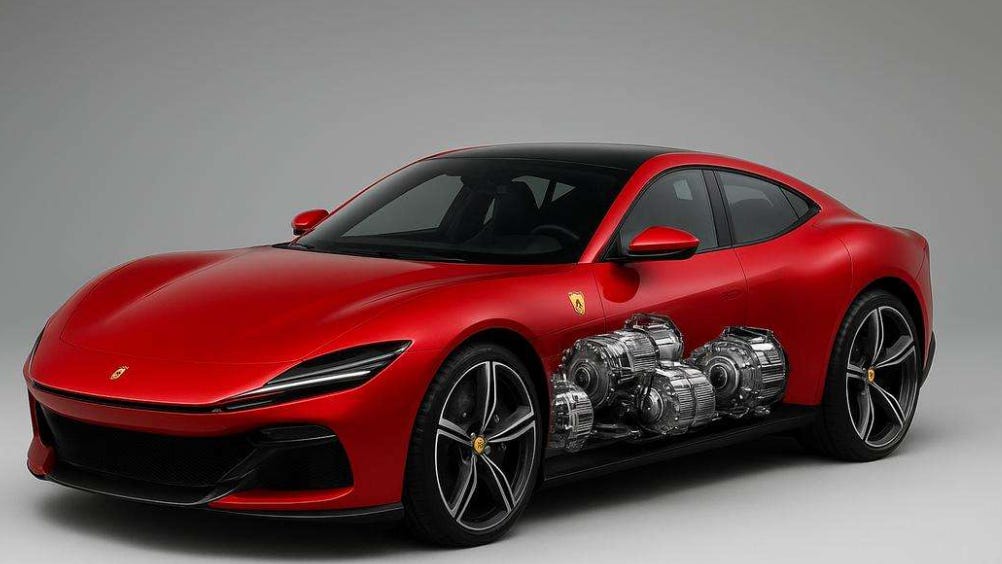The Art of Slowing Down
174: When the Engine Falls Silent -Why Ferrari’s Future Worries Me
A few months ago I had spoken with
, and their team at “Dark Luxury” for an article they were doing about my views on LVMH and some other luxury brands at the time. One of the names that came up was Ferrari. I had been long Ferrari since 2017 entering on average around €75. I sold my position in February of this year at an average price of around €490 which represents a 550%+ gain over the years that I held it. For those of you who know and / or follow me my goal isn’t to “shoot the lights out”. I prefer capital preservation; and there have been some very concerning things I’ve seen at Ferrari that I will highlight here along with explaining why I have now taken a short position in the company.If you follow Ferrari, you most likely know that the company has made a significant commitment to electrification with the opening of its new €200+ million “E-Building” in Maranello, which is its largest facility expansion in decades. This plant is designed to produce Ferrari’s first fully electric model and marks the first time the brand will manufacture electric motors, batteries, and EV components entirely in-house. The facility also supports hybrid and combustion models, giving Ferrari manufacturing flexibility as it navigates mixed customer demand.
With this investment, Ferrari has positioned itself to lift production capacity from roughly 14.000 cars per year to potentially over 20.000, though leadership insists exclusivity remains a priority. The company also says that “by building core EV technology internally, Ferrari is protecting margins, preserving brand identity, and ensuring future electric Ferraris still deliver the performance and emotional appeal expected of the marque.”
Despite this “progress”, Ferrari is already experiencing issues with the EV rollout. While the first EV will be a limited, flagship showcase of technology, plans for a second electric model have already been delayed to 2028 due to weak global demand for high-performance EVs. How have investors reacted?
On October 9th, Ferrari shares suffered their worst trading day on record after the company issued long-term guidance that fell short of market expectations, vaporizing nearly 15% off its value in New York and around 14% in Milan. While Ferrari forecasted 2025 revenue of roughly €7.1 billion and set targets of about €9 billion in revenue and at least €3.6 billion in earnings by 2030. Ferrari also scaled back its electric vehicle ambitions, adjusting its future model mix to 20% fully electric, 40% hybrid, and 40% internal combustion, down from an earlier 40% EV target. The automaker unveiled its first EV, the Elettrica, scheduled for late 2026 delivery, but signaled a more measured path into electrification.
I’ll get into this in more detail shortly, however Ferrari has said that the cost for this model will be in the €500.000 range. I’ll let you be the judge would you spend that amount of money on a car that doesn’t make noise, shift gears, goes “whooooooossssshhhhh” or uses fake engine noises like the BMW i8 (we know how well that did).
Another issue we’re seeing with newer models in the Ferrari line up has been the introduction of hybrid models that combine combining V8 or V6 engines with electric motors. Ferrari’s current hybrid models are the SF90 Stradale, SF90 Spider, 296 GTB, and 296 GTS. Here are the specs below:
SF90 Stradale
26km full electric range
Price New €454.000
Price Used: €380.000
296 GTB
25km full electric range
Price New: €277.000
Price Used: €269.000
296 GTS
26km full electric range
Price New: €370.000
Price Used: €340.000

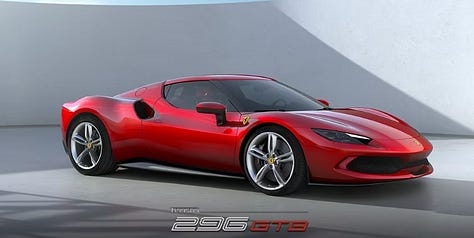
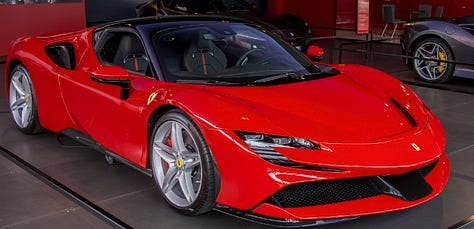
As you can see depreciation is also a bit of an issue. “But Pierre all cars depreciate!” Yes, this is a fair point, however when a Ferrari client is buying a vehicle for their collection thought is given to the long-term, and generally eventual appreciation of the vehicle (assuming it’s taken care of, serviced etc.). Another factor that I’m assuming leads to more depreciation of the newer models is that they are essentially like driving a computer. Here are some examples:
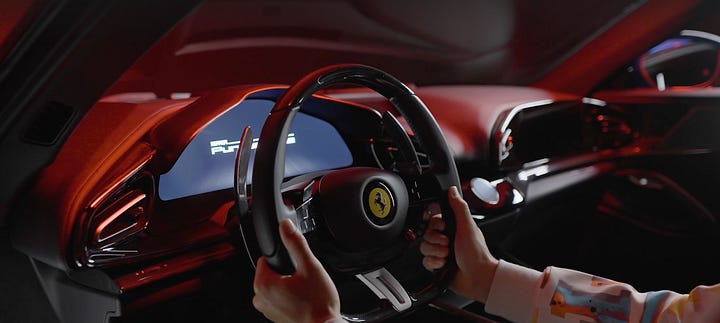

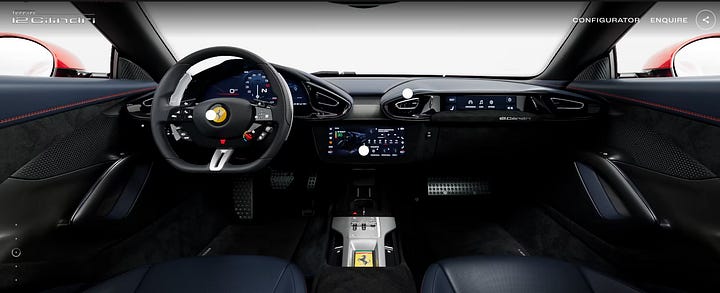
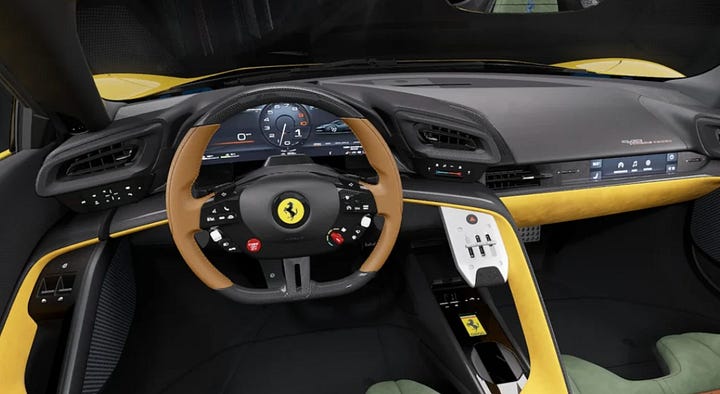
I would imagine that making everything digital and haptic leads to more issues. On top of that the experience of driving the newer models simply isn’t the same as the less “tech-heavy” line up. Personally, I don’t want to touch a haptic button on the steering wheel and have the car just take off with no noise. I want to put the roof down, turn on the ignition and hear the power unit roar to life. My opinion doesn’t always matter so I’ll let you make a judgement call based on the two examples below:
Additionally, looking at the new products Ferrari is producing from the factory, I simply find it difficult to see them increasing in value over the next 25-30+ years (ie as an investment). For example a Ferrari F50 just sold at auction for €4.8 million and a 1993 Ferrari F40 LM sold for $11.8 million at another auction. Do we honestly think that something like the 849 Testarossa is going to command a major appreciation in value? The F80 may, however I believe that the days of these vehicles gaining more and more value is starting to plateau. One of the major reasons for this is the company’s termination of their relationship with Pinnafarina.
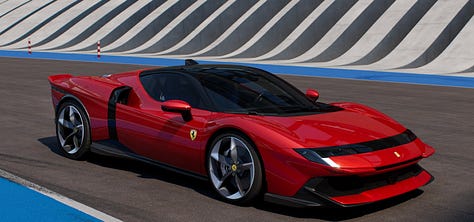

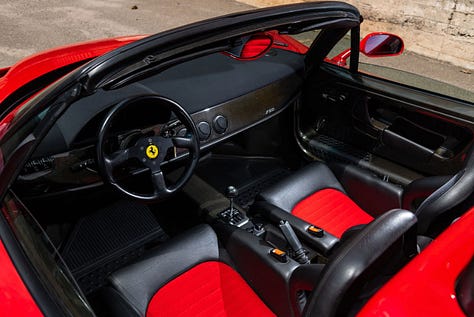



The relationship between Ferrari and the Italian design house Pininfarina began in 1951, and became an alliance that would define the look of nearly every Ferrari production road car for over six decades. The partnership was came after a meeting between Enzo Ferrari and Battista “Pinin” Farina in the neutral town of Tortona, as in classic Italian fashion, neither was willing to concede home advantage to the other. The agreement that emerged from the meeting placed Pininfarina in charge of all Ferrari’s design aspects and produced some of the most iconic vehicles in automotive history, including the 250 GT Lusso, the (original) Testarossa, and the F40.
Unfortunately, this exclusive collaboration began to unravel due to significant changes in both companies. The most crucial factor was Ferrari’s decision to bring its styling work in-house. In 2011, under the leadership of then-chairman Luca di Montezemolo, Ferrari established its own internal design studio, Centro Stile Ferrari. This was a strategic move to gain full creative control and more tightly integrate design with the brand’s performance and aerodynamic engineering. The ultimate statement of this shift came with the 2013 LaFerrari, which Ferrari confirmed was designed entirely in-house, with no contribution from Pininfarina. The F12berlinetta, launched in 2012, was the last Ferrari model to feature full Pininfarina styling.
Further complicating the relationship were Pininfarina’s own evolving circumstances. After years of financial struggles, the company was acquired by the Indian multinational Mahindra Group in 2015. For Ferrari, relying on a design partner owned by a potentially competing foreign conglomerate was seen as a risk. The acquisition also gave Pininfarina the financial backing and freedom to pursue its own projects outside of Ferrari’s shadow. This new direction for Pinnafarina, combined with Ferrari’s desire for internal control, brought an end to one of the most celebrated partnerships in automotive history.
Unfortunately, the situation with Pinnafarina has resulted in some visually assaulting Ferrari models. What this has led to, along with too much tech and the decision to develop hybrid / full EV models is that many legacy clients are turning down allocation. This has become so bad that when I sent anonymous “potential clients” to various dealerships in the US and Europe they came away in most cases with the option to purchase a new vehicle. I read this as Ferrari is having difficulty moving inventory for certain models and this would make sense given that I have spoken with other owners here in Europe who have confirmed that they are turning down allocation of new models. Ferrari’s CEO Benedetto Vigna even said during an interview with CNBC that clients under-forty “now account for 40% of Ferrari’s new clients.” This figure makes sense and I’m doing some work on the financing side of the business.
Additionally, having done several calls with former Ferrari employees and industry professionals, it seems like there are going to be some headwinds in the near-term. Ping me separately if you’re interested in this as I don’t want to post the transcripts given that the information was extremely helpful, and we ended up paying a research provider quite a bit for the engagement.
Ferrari’s financial performance is also tied to their Formula 1 results and merchandise sales globally so that is something I will be looking into in more detail over the next few weeks.
Not everybody is bearish on Ferrari. UBS analyst Zuzanna Pusz recently reiterated a Buy rating on Ferrari, setting a price target of $529, well above the stock’s current price of $397. Pusz, is the Managing Director for European Luxury at UBS and continues to view Ferrari favorably alongside other high-end names like Hermès and LVMH. I think it’s important to note that she’s been right 58% of the time with an average return of just under 7%. So, one could make an argument that you’d also have just as good of a shot of flipping a coin on this as you would listening to the sell-side.
I’d say that Ferrari


